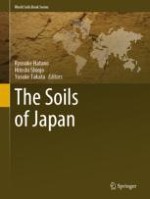2021 | OriginalPaper | Buchkapitel
3. Soil Classification and Distribution
verfasst von : Hitoshi Shinjo, Yusuke Takata
Erschienen in: The Soils of Japan
Verlag: Springer Singapore
Aktivieren Sie unsere intelligente Suche, um passende Fachinhalte oder Patente zu finden.
Wählen Sie Textabschnitte aus um mit Künstlicher Intelligenz passenden Patente zu finden. powered by
Markieren Sie Textabschnitte, um KI-gestützt weitere passende Inhalte zu finden. powered by
